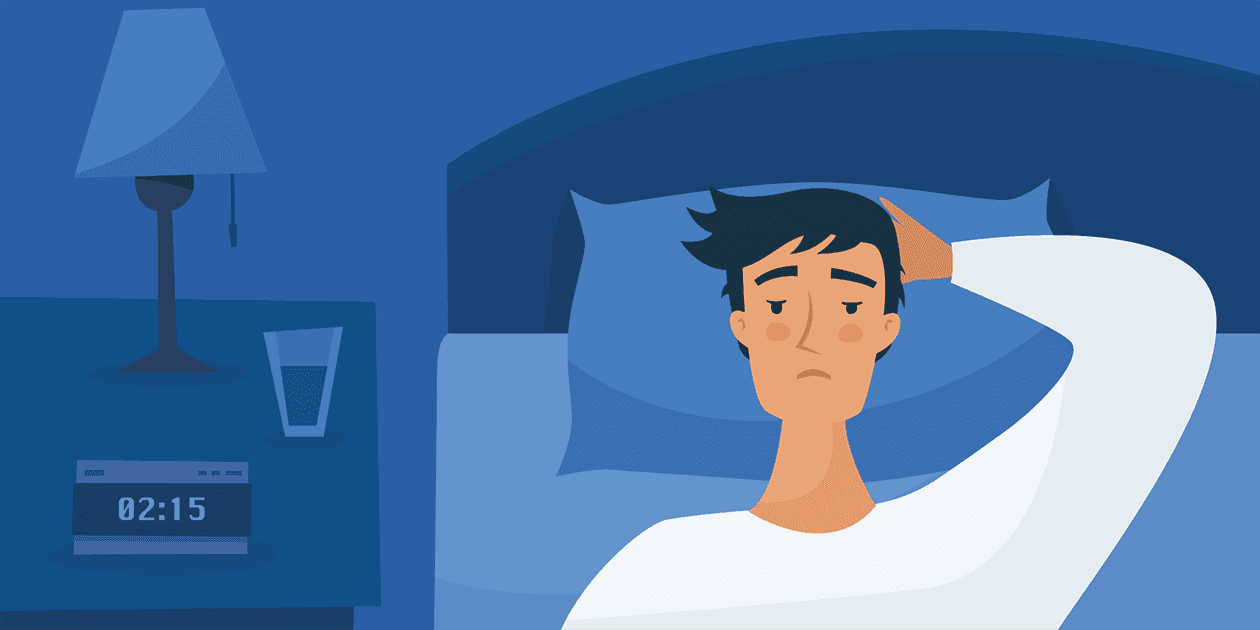
Sleep-related outcome measures obtained with wearable sensors provide valuable data in clinical trials. In addition to reducing the tremendous burden and cost associated with the traditional methods of assessing sleep, wearable technology offers an opportunity to take a more in-depth, day-to-day look into how a patient feels, functions, and survives.
Let’s go over the highlights of sleep-related health issues and the promising wearable technology available to assess sleep outcome measures in real-world settings.
Lack of Sleep Can Point to an Increase Risk of Serious Health Issues
Tens of millions of Americans experience chronic sleep problems at some point in their life.1 Sleep is related to all aspects of physical and mental health and is defined as a dynamic physiologic state that impacts virtually all physiological processes. Good sleep health is multi-dimensional, described by duration, timing, quality, daytime alertness, and absence of a sleep disorder2. There is a cyclical relationship between chronic sleep disruption and disease. Deprivation of sleep can indicate cardiovascular, metabolic, neurodegenerative, and mental health diseases.
Polysomnography; The Gold Standard for Assessing Sleep
Traditional sleep studies require patients to travel to an on-site clinic or laboratory and be monitored overnight with a multi-sensor polysomnography (PSG) system. Sleep PSG incorporates electrophysiological recordings of:
- Brain activity measured from scalp electroencephalography (EEG)
- Muscle activity measured from electromyography (EMG)
- Heart rhythm measured from electrocardiography
- Eye movements measured from electrooculography (EOG)3
Respiratory rate is also commonly measured to identify breathing disruptions. The recordings are combined into a multi-channel polysomnogram and manually scored by a trained sleep researcher.
In addition to being resource-intensive, burdensome to patients, and dependent on expert interpretation of high-resolution sensor signals, PSG monitoring ecological validity is questionable. Ecological validity refers to the extent to which the results of a study or test can be generalized to real-world settings. It is easy to postulate that assessing sleep using a method that requires an overnight stay in a sleep lab or clinic and upwards of 20 wired sensors placed over the body is not a good representation of how sleep occurs in patients’ real world.
Assessing Real-World Sleep; The Role of Wearable Digital Health Technology
The passive, unobtrusive nature of wearable technologies makes them ideal for capturing real-world sleep characteristics and providing unique insights into a patient’s lived experience.
Wrist-worn accelerometers have been used extensively to estimate sleep parameters in clinical research and, more recently, in consumer health products. It’s important to note that accelerometers do not directly distinguish sleep vs. wakefulness; instead, they measure movement continuously, allowing for the assessment of rest-activity cycles. In this sense, using accelerometers to distinguish sleep from wake is based on the premise that activity or movement is low during sleep and high during wake. This assessment is not without limitations. For example, patients can be awake while also being quite still (e.g., lying on the couch watching a movie), and vice-versa can move before transitioning from sleep to wake. It is difficult for accelerometer-based methods to accurately distinguish sleep from wake in patients that exhibit short, fragmented sleep.
Despite inherent limitations, wrist accelerometry remains the most common digital health technology used in real-world sleep assessment. However, newer methods and technologies have begun to simultaneously incorporate behavioral information measured from actigraphy with physiologic signals from other sensors, such as heart rate and body temperature, to improve the accuracy of sleep-related outcome measures.
Wearable EEG technologies are also being used to assess sleep outcome measures at home. The predominant form factor is multiple electrodes integrated into headbands, but in-ear sensors are also being developed. Most of these technologies are still early phase but, when combined with robust analytics, have shown promising results compared to gold-standard measures. Because these technologies measure the brain’s electrical activity, they may prove more suitable for assessing at-home sleep in patients with disordered sleep.
Outcome Measures That Can Be Assessed
Typical sleep-related outcome measures are interrelated and include
- Total Duration
- Timing And Circadian Rhythm
- Fragmentation
- Efficiency
- Wake After Sleep Onset (WASO)
Like all real-world outcomes, accuracy and precision are primarily dependent on sensor modality and the patient population’s characteristics. Most automated sleep detection algorithms were developed in healthy people and are prone to considerable measurement error when applied to populations with disordered sleep.
It is necessary to carefully consider the specific characteristic(s) of sleep you’re interested in measuring. Understand how it’s traditionally defined and measured, what wearable sensor modalities can capture it, and what level of evidence exists to support the use of that modality in the patient population of interest and measurement setting.
Visit our digital endpoints page to learn more about measuring components of sleep in real-world settings. We’ll help you select the best continuous monitoring wearable sensor to obtain the most accurate physiological metrics. VivoSense® software enables you to integrate data from different sensors, devices, and events to produce a richer data set for analysis.
{{cta(’14e0135d-11b4-46c6-802c-6ec2631ad6ea’)}}
1. The State of Sleep Health in America. (n.d.). Sleephealth.org., Retrieved April 2, 2021, from https://www.sleephealth.org/sleep-health/the-state-of-sleephealth-in-america/
2. Chaput, J. P., & Shiau, J. (2019). Routinely assessing patients’; sleep health is time well spent.Preventive medicine reports,14, 100851. https://doi.org/10.1016/j.pmedr.2019.100851
3. Rundo, J. V., & Downey, R., 3rd (2019). Polysomnography. Handbook of clinical neurology160, 381–392. https://doi.org/10.1016/B978-0-444-64032-1.00025-4
